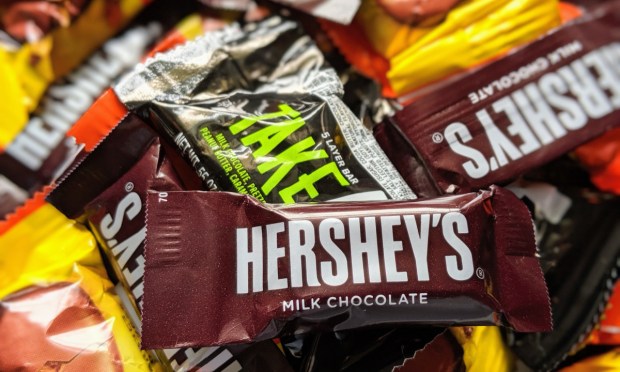
As grocers increasingly shift their focus to their digital and omnichannel businesses, Hershey is seeing one of its key business customers pull back as it prioritizes eCommerce.
In prepared remarks shared with analysts Thursday (Oct. 26) discussing the sweets and snacks giant’s third-quarter 2023 financial results, Chairman and CEO Michele Buck noted that the North American Confectionery business saw growth slow, in part due to a major retail partner making changes to its business.
“The category has … been impacted by distribution and merchandising reductions at a key retailer over the past several months,” Buck said. “Given Hershey’s high share of merchandising and strong gains over the past several years, we have been disproportionately impacted by this change.”
When asked about these reductions on a Q&A call with analysts Thursday, Buck noted that the retailer was cutting back across merchandising categories, shifting its priorities not to other kinds of products but to its eCommerce initiatives and to the shopper experience overall.
“It was more of a focus on consumer experience, for more open aisles and also to enable growth in support of omnichannel and the digital business, [in terms of] picking of products,” Buck said.
Indeed, streamlining stores can be key to simplifying the picking process for digital orders — one of the key challenges for eGrocery overall. Online grocery giant Instacart, for its part, laid out these challenges in a filing with the Securities and Exchange Commission (SEC) in August before its initial public offering (IPO).
“Picking is complex due to the sheer scale of grocery stores and a number of factors that require quality control, such as accuracy of the item, preferred replacement, and product freshness,” the aggregator stated.
It is not immediately clear which retailer Hershey is referring to. None of the largest players in the U.S. (Walmart, Kroger, Costco, Publix) nor in Canada (Loblaws, Sobeys, Metro) appear to have spoken publicly about such reductions. That said, digital transformation is top-of-mind for leading grocers.
For instance, Walmart, the world’s largest grocer, spoke to the success of its digital efforts on its most recent earnings call in August.
“E-commerce sales were up 24%, driven by store-fulfilled pickup and delivery and advertising. We like the trends we’re seeing in e-commerce,” CFO John David Rainey said. “Customers are increasingly counting on us for convenience, and they’re visiting our app and sites more often. In Q2, weekly active digital users grew more than 20%.”
Similarly, Kroger, in addition to citing growth in its eCommerce business, spoke to changes it is making to accommodate the rise of digital.
“We scaled our hands-free technology across the company to improve speed and expanded pickup options with automated pods and lockers, improving productivity and providing customers with more flexibility,” chairman and CEO Rodney McMullen said on the company’s earnings call last month.
Overall, online grocery is indeed on the rise. According to the PYMNTS Intelligence report “Tracking the Digital Payments Takeover: Catching the Coming eCommerce Wave,” created in collaboration with Amazon Web Services (AWS), which drew from an April survey of nearly 2,700 U.S. consumers, about one in three shoppers have said they are very or extremely likely to increase their online grocery purchases in the next year.